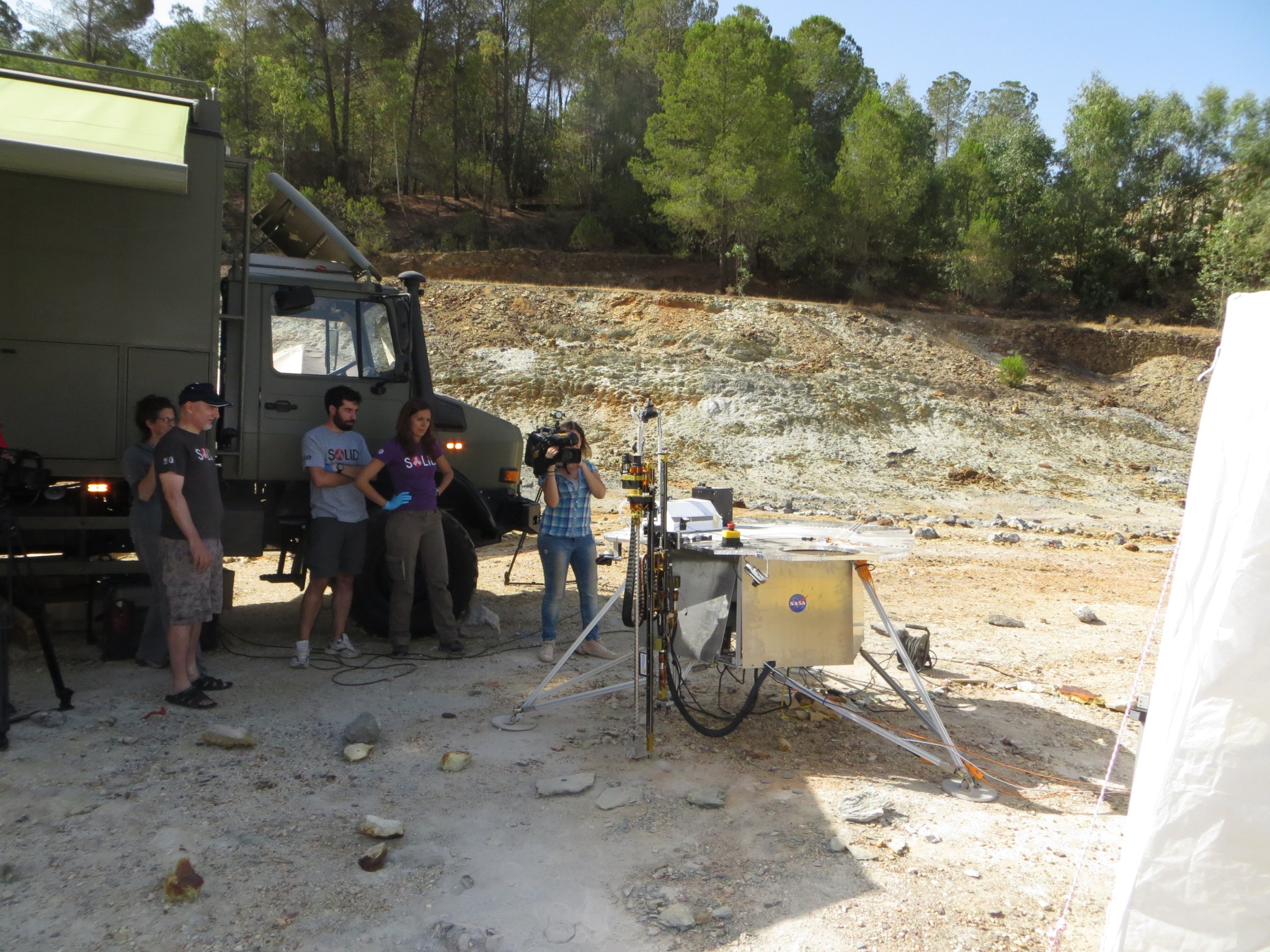Toiling in barren rock fields in southern Spain under temperatures as high as 108 degrees Fahrenheit, a team from NASA’s Ames Research Center, Honeybee Robotics, and Spain’s Centro de Astrobiologia (CAB, INTA-CSIC) is changing dirt into data in a way that could one day be replicated on Mars.
Working in early July at a site at Rio Tinto, Spain — identified as a good analog to certain conditions on Mars — the team used a computerized 35-inch drill to successfully obtain samples from the region’s barren acidic hardened soil. A robotic arm, developed and built at Ames, then transferred the drilled samples to CAB’s Signs of Life Detector (SOLID) instrument, mounted on a full-scale mock-up of a Mars lander’s deck platform.
“We chose Rio Tinto for our tests because of its extreme, organic-depleted subsurface conditions,” said Ames scientist Brian Glass, principal investigator of the Life-detection Mars Analog Project (LMAP) team. “Any present life there would be subsisting primarily on stored energy in the rocks themselves. It’s a bio-analog site rather than a mechanical or textural one.”
Once the samples were in place, the SOLID instrument examined them for specific organic compounds that could be present. The LMAP team chose the drill site for its soil characteristics, a soil that is processed by an acid stream in which microbes grow in extreme acidic environments.
“These are the kinds of microbes most likely of known Earth types to survive and grow in similar environments on Mars,” said Victor Parro, a co-investigator and lead for the SOLID instrument.
Chris McKay, LMAP co-investigator noted, “It’s critical for us to demonstrate and test the acquisition of subsurface material into instruments on a lander deck, so-called ‘dirt-to-data’, under both laboratory and field conditions.”
NASA’s Science Mission Directorate is funding the LMAP field study through its Planetary Science and Technology through Analog Research (PSTAR) program. The field study includes testing of the many prototype components required for future missions: its drill, a full-scale mockup lander platform, a robot arm for transferring samples, cameras on the deck and arm, and the primary Signs of Life Detector from the CAB in Spain. NASA and the CAB have an agreement for shared astrobiology research through 2019, kicking off with the LMAP teams’ first joint field test.
“We want to know if there is Mars life and if we have the appropriate instrumentation,” said Parro. “This collaboration with NASA Ames to participate in development of these technologies drives our possibilities of detecting life outside the Earth.”
“The search for evidence of ancient climates, extinct life and potential habitats for existing life on Mars, given the desiccated and irradiated conditions near the surface, will require drilling or some other form of subsurface access,” said Glass. “The LMAP tests in Rio Tinto are an important first step, by testing robotic drill and sampling systems along with prototype life-detection instruments to assess the ‘ground truth’ of organics and biomarkers found underground at an easily-accessible Mars analog site.”
The methods utilized by the LMAP team in Spain may become standard operating procedure for future NASA space exploration.
“This month’s LMAP tests demonstrated the utilization of realistic field simulation and biomarker detection technologies that will be a candidate method for deployment in flight on future Mars missions,” said McKay.




























